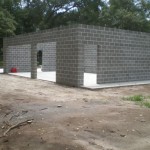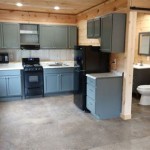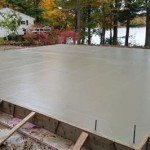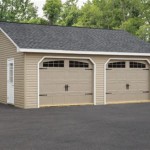Creating the Ultimate Garage Modeler: A Coursera Exploration
The creation of a robust and user-friendly garage modeler presents a significant challenge, requiring a combination of design principles, programming expertise, and an understanding of user experience. Coursera offers a range of courses that can equip individuals with the necessary skills and knowledge to undertake such a project. This article will explore the elements involved in developing a comprehensive garage modeler, outlining key areas of focus available through relevant Coursera offerings.
A garage modeler is, at its core, a software application that allows users to visualize and manipulate the design of a garage space. It can range from a simple 2D layout tool to a complex 3D rendering environment, incorporating features like adding storage solutions, vehicles, tools, and even incorporating virtual reality elements for immersive previews. The complexity of the modeler directly impacts the required skillset for its development, and Coursera's diverse course catalog allows learners to tailor their training to specific project needs.
The success of any garage modeler hinges on its usability. A complicated or unintuitive interface will deter users, regardless of the sophistication of the underlying technology. Therefore, user-centric design principles are paramount. These principles involve understanding the target audience, their needs, and their technical capabilities. Employing techniques such as user personas, usability testing, and iterative design are crucial for creating a modeler that is both functional and enjoyable to use.
From a programming perspective, the choice of programming language and development framework is critical. Options range from web-based solutions utilizing HTML, CSS, and JavaScript, combined with frameworks like React or Angular, to desktop applications built with languages like Python (using libraries like PyQt or Tkinter) or C++. The selection depends on factors such as the desired platform (web vs. desktop), the performance requirements, and the availability of pre-built libraries and components.
Understanding the Fundamental Design Principles
Before diving into code, a solid understanding of 3D modeling principles is essential for creating a visually appealing and accurate garage modeler. This involves learning about coordinate systems, transformations (translation, rotation, scaling), and how to represent 3D objects using polygons or other geometric primitives. Coursera courses in computer graphics and 3D modeling can provide a strong foundation in these areas. Furthermore, exposure to software like Blender for manipulating 3D objects can be invaluable in understanding the practical aspects of 3D design.
One key aspect of 3D modeling is the concept of scene graphs. A scene graph is a hierarchical data structure that organizes the objects in the virtual environment, allowing for efficient manipulation and rendering. Understanding how to construct and traverse scene graphs is crucial for creating a complex garage modeler with numerous objects and interactions. Courses focusing on game development often cover scene graph concepts in detail.
Material properties and lighting are also crucial for achieving a realistic and visually appealing rendering. Understanding how different materials interact with light and how to simulate lighting effects is essential for creating a believable virtual environment. Courses on rendering techniques can provide the necessary knowledge in this area, covering topics such as shading models, texture mapping, and shadow generation.
Beyond the visual representation, the modeler needs to accurately represent the physical dimensions of garage elements, allowing users to plan layouts effectively. This requires careful attention to detail and the ability to incorporate real-world measurements into the virtual environment. Data storage formats, such as JSON or XML, can be used to store object properties, dimensions, and positions, enabling persistence and easy modification of garage designs.
Implementing User Interface and Interaction
The user interface (UI) is the primary means by which users interact with the garage modeler. A well-designed UI should be intuitive, easy to navigate, and provide clear feedback to the user. This requires careful consideration of the layout, controls, and visual cues. Coursera courses on UI/UX design can provide valuable insights into creating effective and user-friendly interfaces.
Implementing interactive elements, such as drag-and-drop functionality for placing objects, resizing tools, and property editors for modifying object parameters, requires specific programming skills. Event handling, mouse input processing, and UI framework APIs are all relevant areas of study. Many web development and desktop application development courses on Coursera cover these topics in detail.
The ability to customize the appearance of the garage is an important feature for many users. Allowing users to change wall colors, floor textures, and lighting schemes can significantly enhance the user experience. This requires implementing a system for managing materials, textures, and lighting parameters, and providing a user-friendly interface for modifying these properties. Furthermore, integrating a color picker or texture browser can improve the ease of customization.
Consideration should be given to accessibility. Ensuring that the garage modeler is usable by people with disabilities is crucial for creating an inclusive and accessible application. This involves following accessibility guidelines, such as WCAG, and implementing features like keyboard navigation, screen reader support, and adjustable font sizes.
Integrating Advanced Features and Technologies
To create a truly "ultimate" garage modeler, it's beneficial to explore more advanced features and technologies. This could include incorporating physics simulation for realistic object interactions, integrating with online databases for accessing a wider range of furniture and equipment models, or even adding virtual reality (VR) support for an immersive design experience.
Physics simulation can be used to simulate the effects of gravity, collisions, and other physical forces. This can allow users to test the stability of structures or to simulate the movement of objects within the garage. Integration with a physics engine, such as Bullet or PhysX, can provide the necessary functionality. Courses on game physics and simulation can provide the necessary knowledge and skills.
Integrating with online databases allows users to access a wider range of pre-built models and textures. This can save users time and effort in creating their own models from scratch. APIs for online 3D model repositories, such as Sketchfab, can be used to access and download models directly into the garage modeler. RESTful API design and data management courses on Coursera can be beneficial.
Virtual reality (VR) support can provide an immersive design experience, allowing users to walk through their virtual garage and experience the space in a more realistic way. This requires integrating with a VR SDK, such as Oculus or SteamVR, and adapting the user interface to work within the VR environment. Courses on VR development can provide the necessary knowledge and skills for building VR-enabled applications.
Another advanced feature is the integration of artificial intelligence (AI) for automating certain design tasks. For example, AI could be used to suggest optimal storage solutions based on the user's needs or to automatically generate layouts based on specified constraints. Coursera offers a wide range of courses on AI and machine learning that can provide the necessary knowledge for implementing these features.
Ultimately, the development of the ultimate garage modeler is an iterative process that requires continuous learning, experimentation, and refinement. The resources available on Coursera provide a valuable starting point for aspiring developers, equipping them with the skills and knowledge necessary to create innovative and user-friendly applications.

The Best Diorama Yet Metal Maniacs Garage Review Via Sparky S Creations

16 Best Courses To Make 3d Models

Lego Ferrari Ultimate Garage Set 75889 Build And Review Of The 250 Gto 488 Gte

Coursera Get 100 Off Paid Premium Courses Free With Certificate Crispbot

17 Free Google Certification Courses 2025

6 Best Digital Marketing Courses For Effective Training

How To Build A Garage Ultimate Step By Guide

Game Design Work A Playcentric Approach To Creating Innovative 5 Nbsp Ed 9781032607016 9781032607009 9781003460268 Dokumen Pub

Introduction To Generative Ai All Quiz Answers Coursera Learnerspoint Courseraquizanswrs Learning

Training At Scale With Vertex Ai Service Step By Qwiklabs Coursera Arcade
Related Posts








